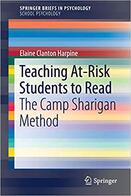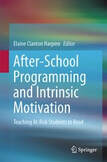
In the classroom, most public schools are still using whole language techniques or some form of phonics. For the last two years, there has been a major push to bring back phonics. If you look on the Internet, the call to bring back phonics is almost worldwide. The United States, England, and Australia are major supporters for bringing back phonics. The “new methods” being discussed in schools and in university education departments include phonics or balanced literacy, which is phonics and whole language combined. What has this push for phonics given us? Fewer children being able to read. No, whole language is not the answer; it’s part of the problem. Phonics is not the answer either, and balanced literacy certainly has not proven to be effective.
The 2019 Nation’s Report Card shows that the average reading score for fourth graders is one point lower compared to test results in 2017. For eighth graders, the average reading score is three points lower than the test results in 2017. Why? When schools are stressing phonics as well as balanced literacy more and more, why are reading scores getting worse?
Dr. Mark S Seidenberg, a cognitive neuroscientist for the Department of Psychology at the University of Wisconsin-Madison and author of Language at the Speed of Sight: How We Read, Why so Many Can’t, and What Can Be Done About It (2017), said:
“How reading is taught is indeed a significant part of the literacy problem in the US and other countries…. In the US, the conflicting and often strongly entrenched interests of various stakeholders—educators, politicians, scientists, taxpayers, labor organizations, parent groups—make it hard to achieve meaningful change within the existing institutional structure of public education.” (p. 10)
The push to use phonics in the classroom is not supported by better test scores or by the number of children learning to read. Phonics is also not being supported by scientific research:
- Jeanne Sternlicht Chall (1967) an advocate for systematic phonics, visited over 300 classrooms. While she concluded that systematic phonics was superior to “look say” whole language in 90% of the classrooms, she also clearly stated and warned that a purely phonics approach would leave many students failing.
- Linnea C. Ehri studied 66 phonics vs. whole language groups and again found systematic phonics to be superior to whole language but also found that systematic phonics “… did not help low achieving readers that included students with cognitive limitations” (Ehri 2001).
- As the National Reading Panel (National Reading Panel, 2000) states, “…systematic phonics approaches are significantly more effective than non-phonics [whole language]…. However, phonics instruction failed to exert a significant impact on the reading performance of low-achieving readers in 2nd through 6th grades….” (p. 94). Phonics simply does not work for many students.
- Gerald Hughes, Director of the Neuro-Linguistic Learning Center and author of the book, Gifted—Not Broken: Overcoming Dyslexia, ADD and Other Learning Challenges states that long-standing research shows that: “…20% of all children will show little or no lasting improvement in reading ability using phonics-based programs….using a phonics-based program on this particular group of children, is more than likely doomed to failure because it is focused on the very weaknesses of the child. Experience has repeatedly shown that when subjected to an extensive phonics-based program, many of these children will experience frustration, anger and ultimately continued failure.”
- In 2013, Tunmer and associates also stated from their research that Reading Recovery (often used to teach struggling students from the classroom) was also not effective with failing, struggling students. As they stated, “Students with phonological difficulties did poorly [in Reading Recovery].”
- Sebastian P. Suggate’s 2016 study compared 71 phonemic and phonics intervention groups and found that “… phonemic awareness interventions showed good maintenance of effect… phonics tended not to.”
So, why, when other research-based methods have been proven to be better, do the schools keep teaching phonics? We must stop letting old worn-out ideas and theories stand in the way of teaching methods that improve learning in the classroom.
- Neuroimaging research has changed how we view reading: “Today scientists can actually watch the brain as it works to read; scientist can actually track the printed word as it is perceived as a visual icon and then transformed into the sounds (phonemes) of language and simultaneously interpreted from the meaning that is stored within the brain” (David A. Kilpatrick in Equipped for Reading Success, pp. 59-68).
- Reading is more than merely associating letters and sounds: “In order to read, a child must ‘enter the language system;’ this means that the child must activate and use the brain circuits that are already in place for oral language…. Tens of thousands of neurons carrying the final phonological messages necessary for language…. Connect to form the resonating networks that make skilled reading possible….” (Shaywitz, Overcoming Dyslexia, 2003, pp. 59-68).
- The new scientific understanding -- orthographic mapping: “Until recently, almost everyone thought that we store words by having some type of visual image of every word we know…. Many teaching approaches [like phonics and whole language] presume this. We assume that if students see the words enough, they will learn them. This is not true…. I believe this assumption that we store words based on visual memory is a major reason why we have widespread reading difficulties in our country…. The big discovery regarding orthographic mapping is that this oral “filing system” is the foundation of the “filing system” we use for reading words. We have no “visual dictionary” for reading that runs alongside our oral dictionary.”
In an interview with the National Institute of Health, Dr. Sally Shaywitz, a leading reading expert, stated that "Teaching matters and good teaching can change the brain in a way that has the potential to benefit struggling readers."
In my program, vowel clustering teaches children to decode or break words down into letter sounds and then to encode or reassemble those sounds back into pronounceable words. Vowel clustering is not a form of phonics and does not use the phonics teaching approach. Vowel clustering teaches reading, handwriting, spelling, fluency, comprehension, and oral reading. Vowel clustering has been tested and proven to work with all students, including struggling, at risk, and failing students. There are new methods available.
So, why are we allowing children to continue to fail in reading? We need to throw out phonics, whole language, balanced literacy, and Reading Recovery. We need to start start over. It’s time to put an end to reading failure.
Just as at my previous sites, at my Corpus Christi reading clinic, with the Reading Orienteering Club, children are improving in reading each and every day. These are children who failed in the public-school and some in private schools. We even had two students move up two grade levels in reading after only 48 hours of instruction this fall. Yes, we can teach children to read; we just refuse to change from whole language and phonics and do so.

 RSS Feed
RSS Feed
